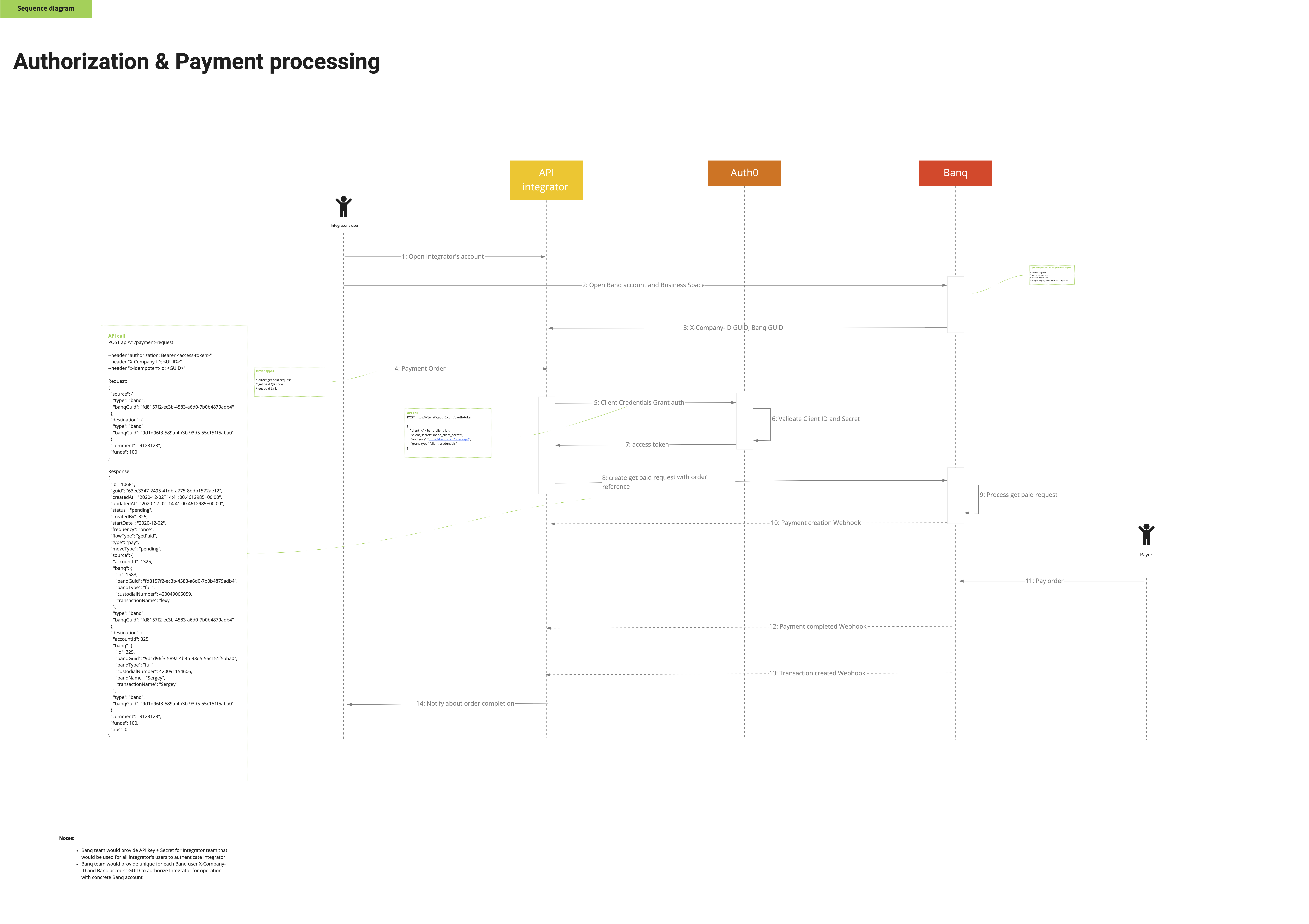Integrating the API
Authentication
Authentication is described in the Quickstart document.
Webhooks
The Open API uses webhooks to inform integrators about activities and changes to statuses such as payment transactions. Review the Quickstart document to setup webhooks.
Subscribing to Webhooks
The Open API uses webhooks to inform integrators about activities and changes to statuses such as payment transactions.
Ensure you're subscribed to webhooks in order to receive updates when payments to your QR codes or links actually complete.
Payment Processing
Payment processing is done by first creating a payment-request. Once a payment request is created it can be displayed as a QR code for easy in-person payments or a link that can be sent via email, SMS, or any other messaging application.
Once the end user completes the payment (by scanning the QR code or by acting on the link), the Open API will fire webhooks informing you of the transaction.
Payments breakdown into two core objects, payment and transactions. The payment object represents the high level information about a payment such as one-time vs recurring, source, destination, etc. The transaction object represents a particular transaction within that payment.
One-Time Payments
If a payment is one-time, the payment will have one transaction. The payment ID can be stored to correspond to an order ID so the order can be marked as paid once the payment is completed.
Recurring Payments
If a payment is a recurring payment such as rent payments, the payment object will represent the high level data such as the monthly recurrence and there will one transaction each month under that payment representing the rent collection.
Diagram

Updated over 4 years ago
